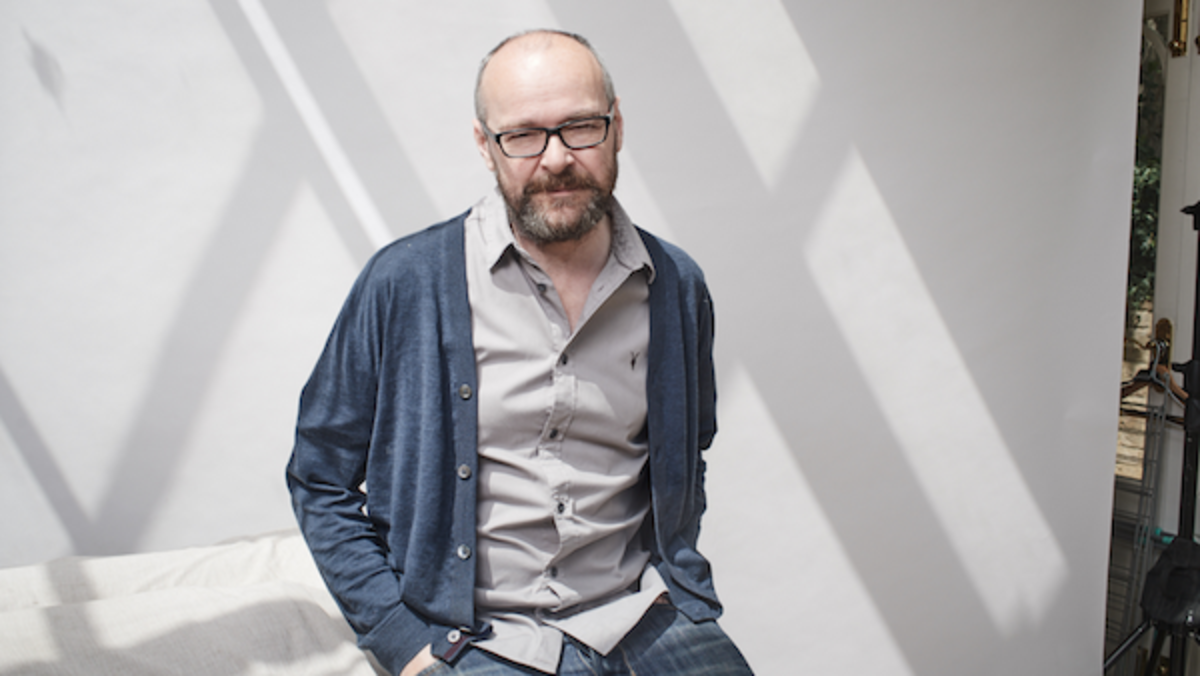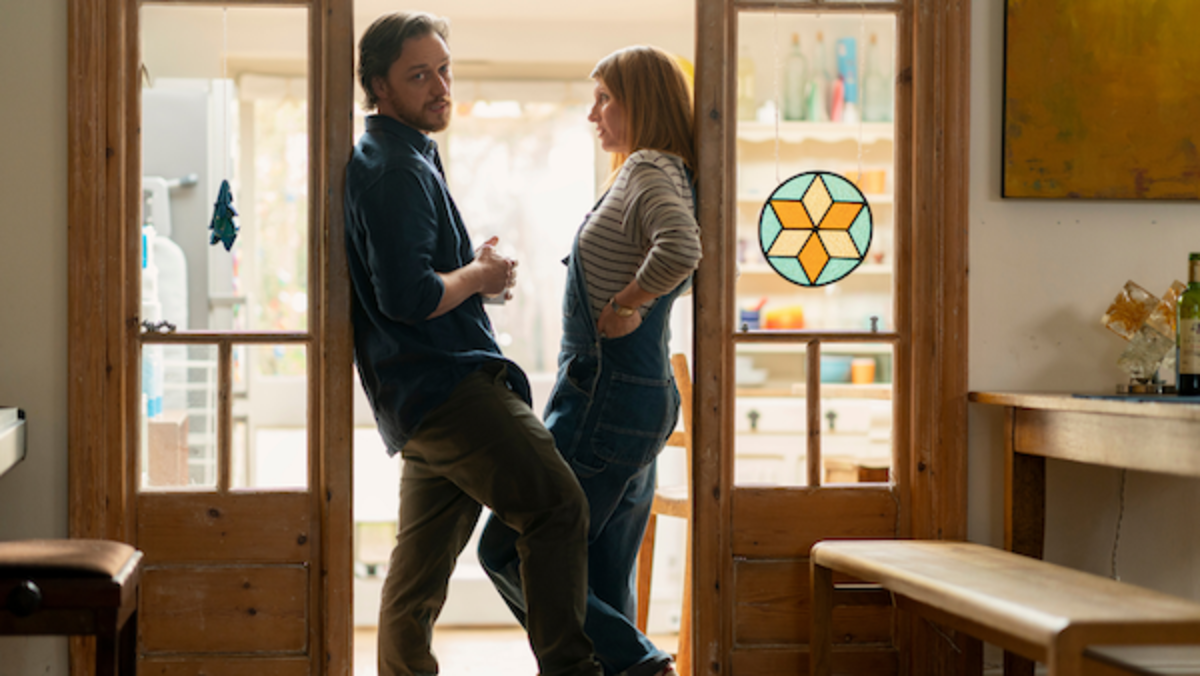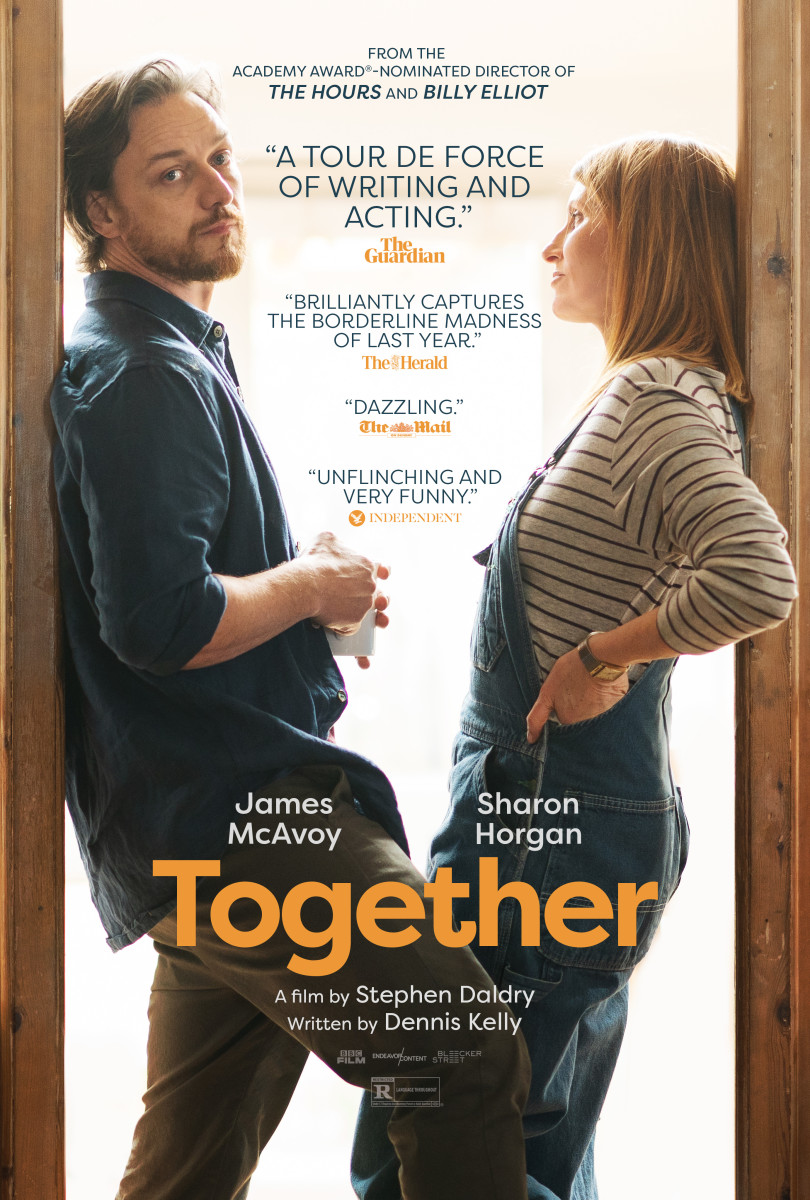Susan Kouguell interviews Tony®, Emmy® and Olivier Award winner writer Dennis Kelly about his funny, provocative and poignant new film ‘Together’. The film follows one family navigating the challenges faced by people worldwide during a once-in-a-lifetime crisis and finding a way to survive — together.

Dennis Kelly did not set out to write a piece about COVID, but as the pandemic began, he was hearing people around him say things like, “We’re all in this together, isn’t it great? Let’s make videos and make it fun.” However, he thought, what if everyone isn’t in this together? “How much fun can it be if you hate the person that you’re with or you’re losing your job or you’re one of the people who wasn’t able to work from home — the ones that kept society going?”
Directed by Academy Award® nominee Stephen Daldry, Together stars James McAvoy and Sharon Horgan who portray a couple forced to re-evaluate themselves and their relationship through the reality of lockdown.
I had the pleasure to speak with Tony®, Emmy® and Olivier Award winner writer Dennis Kelly about his funny, provocative and poignant new film Together. The film follows one family navigating the challenges faced by people worldwide during a once-in-a-lifetime crisis and finding a way to survive — together.
Dennis Kelly wrote the screenplay for the feature Black Sea and his work for theater includes Debris, Osama the Hero, After the End, Love and Money, Taking Care of Baby, Orphans, The Gods Weep, The Ritual Slaughter of Gorge Mastromas and Girls and Boys. His television credits include creating and writing Utopia, Pulling, and The Third Day. Kelly also wrote the book for the Olivier-and Tony-winning Matilda the Musical.
This interview has been edited for content and clarity.
KOUGUELL: Let’s start with the hot button topic of taking on the challenge of writing about COVID and this specific time period.
KELLY: I’ve never written about anything so immediate — and it’s still going on. I didn’t want to write about COVID, it just happened. I was busy during lockdown; I was lucky to have work all the way through this time. One night my partner and I watched the news together and I was stunned by the idiocy I saw, and fueled by the anger I wanted to write about two people who felt very different about what was going on, and questioned what if you didn’t like the people you were with during lockdown.
[Interview with ‘Esther in Wonderland’ Filmmaker Stephanie Bollag]
KOUGUELL: Together was shot in ten days after ten days of rehearsal. Were you present?
KELLY: Yes, all the way through. Daldry wanted me there. He was extraordinary. He guides you through with brilliant ideas and he has lots of experience and is not threatened by suggestions. It became a collaborative process.
KOUGUELL: There are only seven scenes in the film, which gives the film a layer of intimacy and tension.
KELLY: Originally there were just five or six scenes. There was a different kind of ending before.

Kelly went on to talk about adding and cutting scenes, and we agreed that this was a great example of the adage of the heartbreak of “killing your darlings”.
KELLY: This was definitely a challenge in this film especially when actors give beautiful performances. One must think about the whole of the piece.
KOUGUELL: Your two main characters break the fourth wall.
KELLY: I write for television, theater and film, and throughout my career, my advice is, never think that you have three jobs divided by three, they’re all different disciplines. And then I broke that rule. This script is definitely influenced by playwriting.
What we were doing was different, than for example The Office. In Together they were talking directly to the audience.
KOUGUELL: Often that device can take the viewer out of a movie, but not in this case.
KELLY: We didn’t know if it worked at first but then you look at Sharon when she has a direct to camera speech and you really experience what she’s feeling as this woman.
KOUGUELL: The characters are known as “He” and “She”. Why no names?
KELLY: I’m terrible with names. In my first plays, I had students and people writing about my work come up to me and say things like, ‘Why are there so many characters named Louise?’ With my play Girls and Boys, I refused to give the characters names, because human beings are constantly accessing others, and there is that internal process when someone hears a person’s name, they immediately label them.
[The Making of an Icon ‘Lady Boss: The Jackie Collins Story’]
KOUGUELL: Without the names, the viewer can impose their own story onto these characters.

KELLY: Yes. And He and She are such different characters; He is a staunch conservative and She is more of a liberal. He calls She a socialist.
KOUGUELL: We don’t see He and She interact with their son very often, which is an interesting choice.
KELLY: Originally, the boy wasn’t in the script. Daldry wanted him moving around in the background, and I really liked how he did that and the boy he cast was wonderful. At the end of the film, after a while you get a sense of their son when he’s on the trampoline. I was thinking about my daughter who at the time was two-years old. I was thinking about all the kids during this time. There’s so much we all had to process during lockdown.

